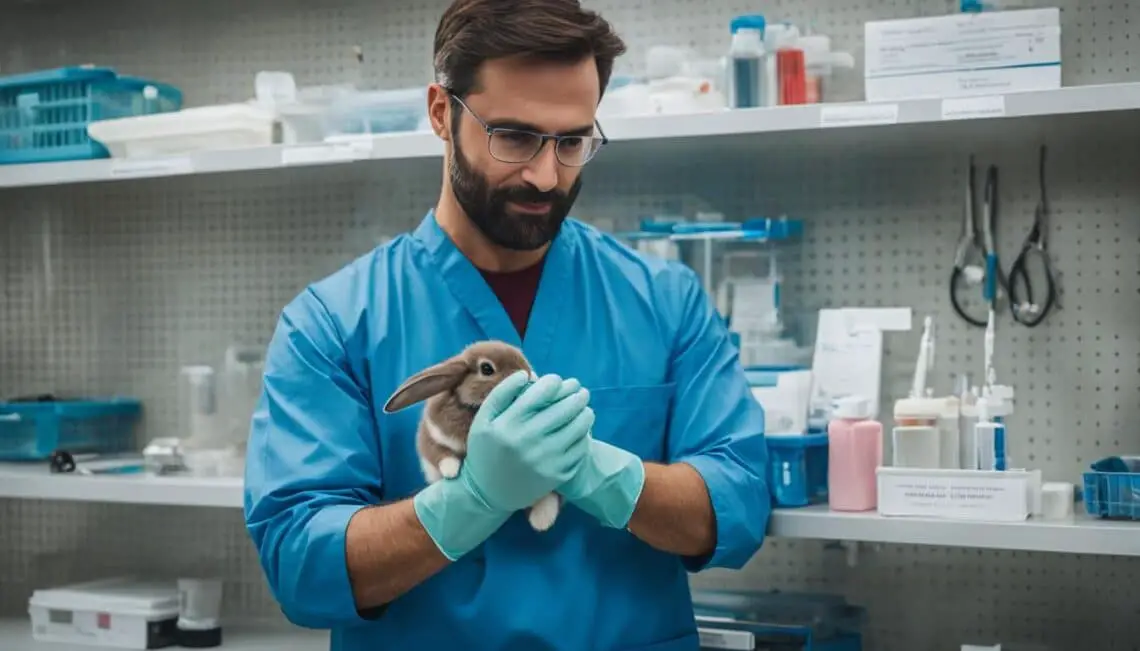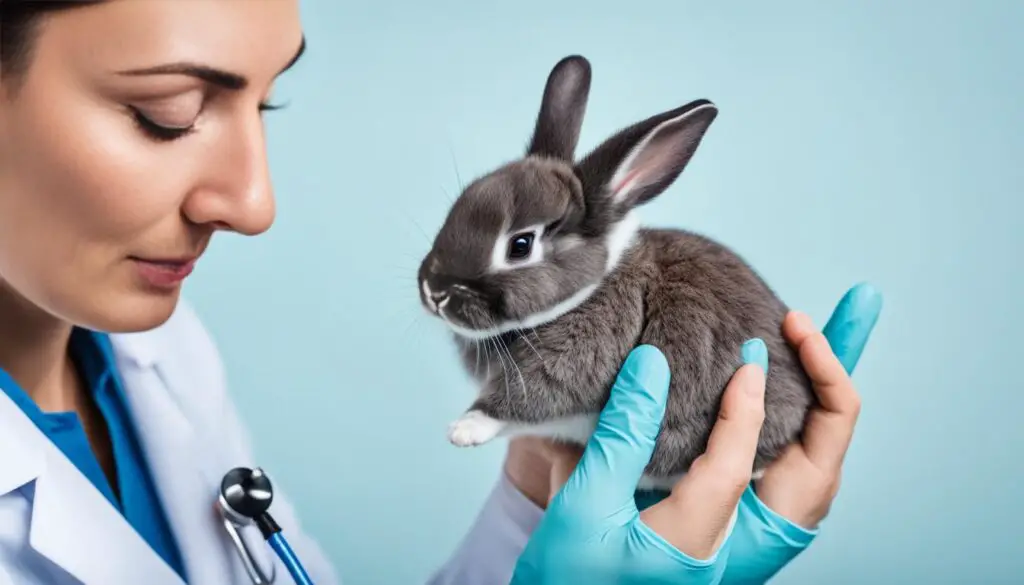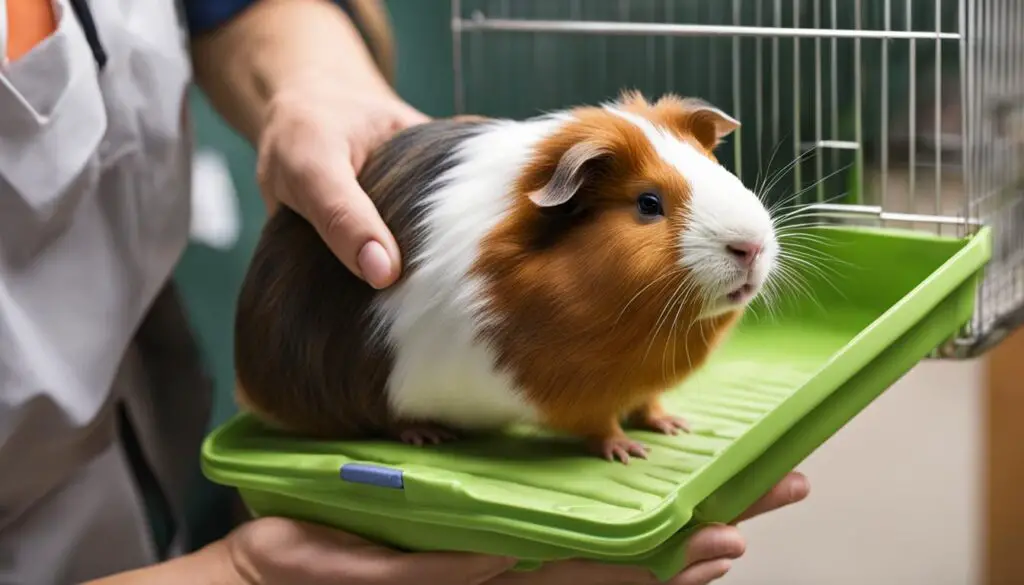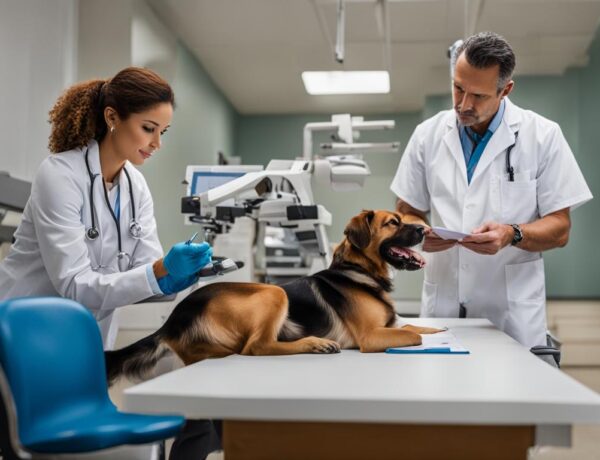When it comes to taking our small pets to the vet, their safety and well-being should be our top priority. Handling them with care and ensuring a stress-free experience is crucial for their health and happiness. Whether you have a gerbil, hamster, mouse, rat, guinea pig, chinchilla, or rabbit, understanding their nature, creating a safe environment, and using proper handling techniques are essential for a successful vet visit.
Key Takeaways:
- Handling small pets safely during vet visits is vital for their well-being and comfort.
- Creating a safe environment in the veterinary hospital can help reduce stress and anxiety.
- Understanding the nature of small mammals and their unique needs is essential.
- Using gentle and slow handling techniques can minimize fear and ensure a positive experience.
- Species-specific handling techniques are necessary for guinea pigs, chinchillas, and rabbits.
Nature of Small Mammals and Veterinary Hospital Environment
Small mammals, such as gerbils, hamsters, mice, rats, guinea pigs, chinchillas, and rabbits, have unique temperaments and behavioral characteristics. As prey animals, they possess highly developed senses and may feel stressed in the veterinary hospital, especially due to predator odors. To ensure their well-being and minimize their instinct to panic or struggle, it is crucial to create a safe environment within the veterinary hospital.
One way to achieve this is by setting aside a separate examination room specifically designed for small mammals. This dedicated space provides a calm and secure area away from other animals, reducing their exposure to stressors. Additionally, dimming the lights in the examination room can help create a tranquil atmosphere for these sensitive creatures.
Another important aspect of creating a safe environment is using clean bedding for small mammals during their stay at the veterinary hospital. Clean bedding not only provides comfort but also minimizes the risk of infections and promotes a hygienic environment for both the animals and the veterinary staff.
Minimizing exposure to predator odors is crucial in creating a safe environment for small mammals in the veterinary hospital. These odors can trigger their natural instinct to fear and may worsen their stress levels. Veterinary hospitals can take steps to reduce these odors by regularly cleaning and sanitizing surfaces, using odor-neutralizing products, and implementing proper waste management practices.
By understanding the nature of small mammals and taking proactive measures to create a safe environment within the veterinary hospital, we can ensure that they receive the care they need while minimizing their stress levels.
Providing a safe and stress-free environment is crucial for the well-being of small mammals during their vet visits. By prioritizing their comfort and ensuring a calm atmosphere, we can help alleviate their anxiety and contribute to a positive veterinary experience.
Handling Techniques for Small Mammals
Handling small mammals requires gentle and slow approaches, keeping the voice low, and avoiding sudden movements and loud noises. By taking these precautions, we can create a calm and stress-free environment for our furry friends. When handling small mammals such as gerbils, hamsters, mice, rats, guinea pigs, chinchillas, and rabbits, it’s important to consider their unique needs and behaviors.
Before removing a small mammal from its cage or carrier, it’s essential to observe them and understand their body language. Each animal may have different preferences and sensitivities when it comes to handling and restraint. By taking the time to learn about their individual needs, we can ensure a positive experience for both the pet and the caretaker.
One effective technique is to ask the owners about their handling and restraint methods at home. They may have discovered specific techniques that work well for their pet, which can be replicated in the veterinary setting. By utilizing familiar handling methods, we can help reduce any anxiety or fear that the animal may experience.
When handling small mammals in the examination room, it’s crucial to use the least amount of restraint necessary. This can help minimize stress and discomfort for the animal. Different species of small mammals may require specific handling techniques:
- Gerbils: Avoid holding them by the base of their tails, as this can cause injury.
- Hamsters: Gently shaking the cage or tapping on the side can help awaken them before handling.
- Chinchillas: Wrap them securely in a towel for safe restraint, ensuring they feel supported and secure.
By tailoring our handling techniques to each small mammal’s specific needs, we can establish trust and create a positive veterinary experience. The goal is to make them feel safe and secure throughout the examination process.
Remember, the well-being and comfort of small mammals during vet visits should always be a priority. Utilizing these handling techniques can help ensure a smooth and stress-free experience for both the animal and the veterinary team.
Handling Techniques for Guinea Pigs, Chinchillas, and Rabbits
When it comes to handling guinea pigs, chinchillas, and rabbits, it’s important to have a good understanding of their specific needs and behaviors. Each of these small mammals requires unique handling techniques to ensure their comfort and safety during vet visits.
Guinea Pigs
Guinea pigs are generally docile and less likely to bite compared to other small mammals. When handling a guinea pig, it’s best to approach them gently and lift them by grasping their thorax and shoulders. Avoid lifting them by their legs or scruffing them, as this can cause stress and discomfort.
Chinchillas
Chinchillas are delicate animals that should not be scruffed or handled roughly. Instead, they should be held by grasping the base of their tail or wrapped in a towel for examination. This ensures their safety and minimizes the risk of injury or escape.
Rabbits
Rabbits have powerful musculature and a delicate skeleton, which requires special handling techniques. When picking up a rabbit, it’s important to support their chest and hind end to avoid putting unnecessary strain on their spine. Alternatively, you can place one hand under the ventrum (underbelly) and the other over the back to provide adequate support.
Remember, when handling any small mammal, it’s crucial to be gentle, calm, and patient. Sudden movements, loud noises, or rough handling can cause stress and anxiety for these animals. By following the appropriate handling techniques for guinea pigs, chinchillas, and rabbits, you can ensure a positive and stress-free experience for both the pet and the owner.
Conclusion
By understanding the nature of small mammals, creating a safe environment, and using proper handling techniques, we can ensure that small pets have a stress-free experience during vet visits. It is crucial to prioritize the well-being and safety of these beloved companions.
Providing a calm and positive atmosphere in the veterinary hospital can greatly contribute to a stress-free experience for small pets. This can be achieved by setting aside a separate examination room, dimming the lights, using clean bedding, and minimizing exposure to predator odors. Such measures help alleviate their instinct to panic or struggle.
Handling small mammals with care and using gentle techniques is essential. Observing them in their cages or carriers before removing them, asking owners about their handling methods at home, and using the least amount of restraint necessary can help reduce their stress levels. Additionally, species-specific handling techniques should be applied, such as avoiding holding gerbils by the base of their tails, gently shaking the cage to awaken hamsters, or wrapping chinchillas in a towel for safe restraint.
Remember, creating a stress-free experience for small pets during vet visits involves not only physically handling them but also maintaining a calm and positive demeanor. Using positive reinforcement and remaining calm ourselves can further contribute to a positive veterinary experience for these beloved companions. Prioritizing their well-being and safety should always be our utmost concern.
FAQ
How can I ensure the safety of my small pet during a vet visit?
To ensure the safety of your small pet during a vet visit, it’s important to handle them safely. This includes creating a safe environment in the veterinary hospital, using proper handling techniques, and understanding the nature of small mammals. By following these measures, you can help make the experience stress-free for your pet.
What should I consider when creating a safe environment in the veterinary hospital for my small pet?
When creating a safe environment in the veterinary hospital for your small pet, consider setting aside a separate examination room, dimming the lights, using clean bedding, and minimizing exposure to predator odors. These measures can help reduce stress and anxiety in your pet during their visit.
How should I handle my small mammal during a vet visit?
Handling small mammals requires gentle and slow approaches. Avoid sudden movements and loud noises, keep your voice low, and observe the animals in their cages or carriers before removing them. Different species may require different handling techniques, so it’s important to ask the owners about their handling and restraint methods at home and use the least amount of restraint necessary.
Are there specific handling techniques for guinea pigs, chinchillas, and rabbits?
Yes, there are specific handling techniques for guinea pigs, chinchillas, and rabbits. Guinea pigs can be lifted by gently grasping the thorax and shoulders. Chinchillas should not be scruffed; instead, they should be held by grasping the tail base or wrapped in a towel for examination. Rabbits, due to their powerful musculature and delicate skeleton, should be picked up by supporting the chest and hind end or by placing one hand under the ventrum and the other over the back.
How can I further contribute to a positive veterinary experience for my small pet?
To further contribute to a positive veterinary experience for your small pet, provide a calm and positive atmosphere, use positive reinforcement, and remain calm yourself. These actions can help alleviate your pet’s stress and anxiety during the visit, ensuring their well-being and safety.







No Comments